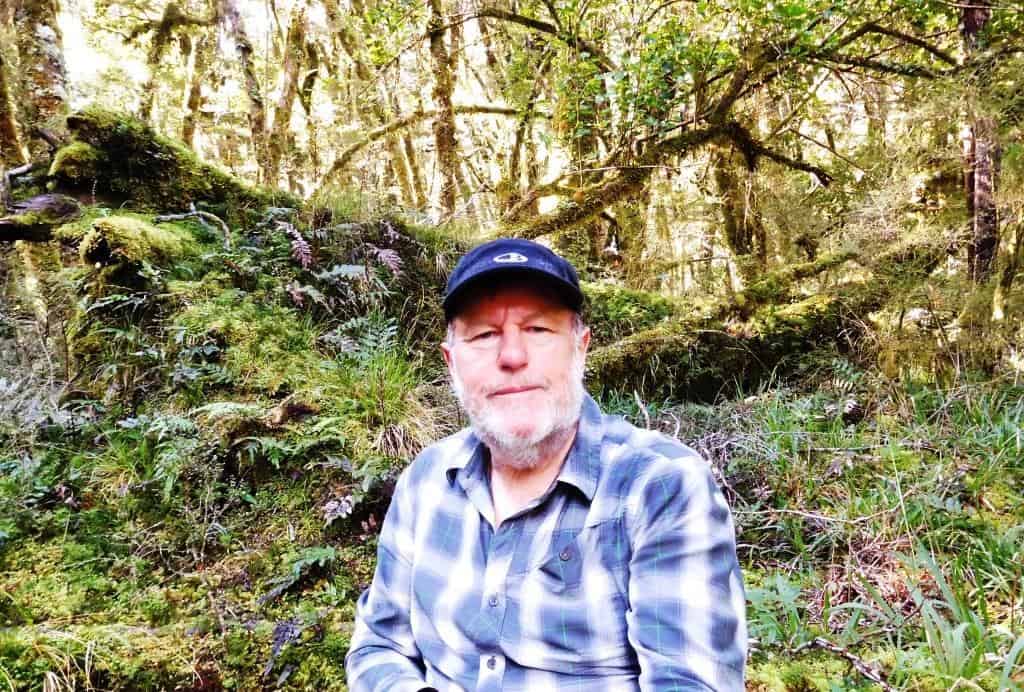I’m sure many people take far too many – just as they take far too much of everything else – and yet often not enough survival equipment, such as a knife or a roof or a satellite messenger, for example.
I don’t think it matters whether you are just away for the weekend, or for a month. I probably take exactly the same items. I just don’t believe unless you are off hunting/hiking in some exceptional circumstances I have not envisaged/experienced (unlikely) that you need heaps of changes of clothes. I have been doing this (eg camping out regularly in alpine winters in Victoria) for sixty years and more (call that 70!) and am more or less still in one piece, so if there is any danger in my preps it is not much.
Similarly, I go to Fiordland NZ most years in late autumn. It is likely about the wettest place on earth. Night-time temps are usually below freezing and much colder than that on the mountain tops. The thick bush (I do a lot of off-track exploration) means I can be pretty sure I will be soaked to the skin at the end of the day. Well, probably long before. (Not so likely to happen to you if you stick to the tracks, but: be prepared!) Even there I only take one dry change.
I am now in my 75th year. Here I was (moose hunting camera only) having lunch on the Hauroko Burn on the second day (of 8 needed) walking the Dusky Track in Fiordland in late May 2017. As you can see, no-one else about (which suits me!)
My lovely wife Della (alas) was not feeling well enough for the trip (angina – fixed now. We have just returned from hiking in Nepal). However I was able to message her (back and forth) at breakfast, morning tea, lunch, afternoon tea and at day’s end – and of course we also had a goodnight chat on the sat phone before bed. (The Sat Messenger includes location with each message, and has an epirb, if needed).
All this communication after very over 50 years together – perhaps there may be something to be learned from us after all!
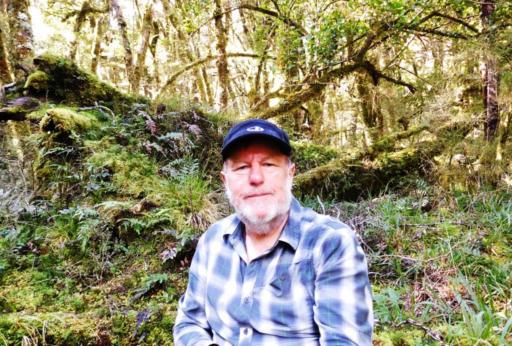
All my gear and food for 10 days (plus emergency supplies for a further two) fitted easily in my very comfy 400 gram by 50 litre (inc pockets) Zpacks Dyneema pack I have had for many years – plus the ability to camp out in the bush, which I did. I recently completed one further mod to it. Still only around 10 kg including food and water.
They no longer make such a one though they have some great packs, (indeed I have a new one which has already been to the Dusky for our 50th Anniversary Walk ) but Mountain Laurel Designs do.
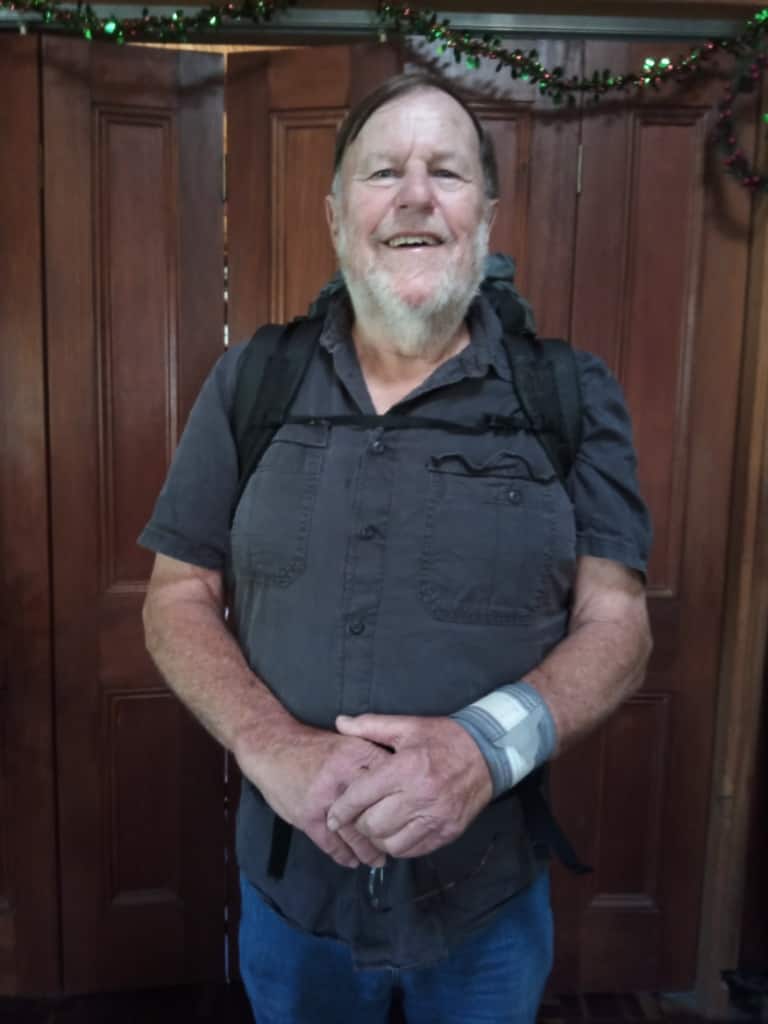
The couple of folk I encountered labouring along under their mountain of gear (yet as it turned out not having enough food – I had to give them some!) thought I was carrying just a day pack! They were even more surprised when they learned I was intending to camp out (something they were foolishly completely unprepared for!)
My normal behaviour wherever I am is to take a light change of dry clothes to sleep in – so either a pair of wind pants and matching top (summer) or wool long top and long johns winter, plus a light down coat and vest, down socks and an insulated hat – and of course my Buff (though I now prefer an Icebreaker Balaclava) to keep my nose warm on cold nights.
If there are going to be lots of people about I might take a pair of light shorts for swimming/bathing (Yes, even at daytime temps of 5-10C) or for wearing when I am washing my clothes.
Usually though there is no-one about apart from my wife so I just take my clothes off and wash them – and myself -using my billy (naked – a saving of 28 grams on the shorts!) wring them out and put them straight back on again sometime during the day. Body heat dries them in less than 15 minutes.
Elsewhere (eg winter hunting in the Gippsland mountains, Victoria) if I have a fire (and it is not raining) I will wash them out whilst wearing my dry change, then hang them in front of the fire so that they will be dry and clean for the next day.
I make open shelters for camping in which I can enjoy the pleasure of a fire out front. As nearly all of my camping is wilderness (bushwhacking) there is always plenty of fuel, and in the cooler months there is little or no danger of the fire escaping. If there were I would not have or need a fire. I think one of these would be a good cheap substitute for the shelters I make myself. (My tent pole doubles as a clothes line though I also have one inside along the centre line of my tents).
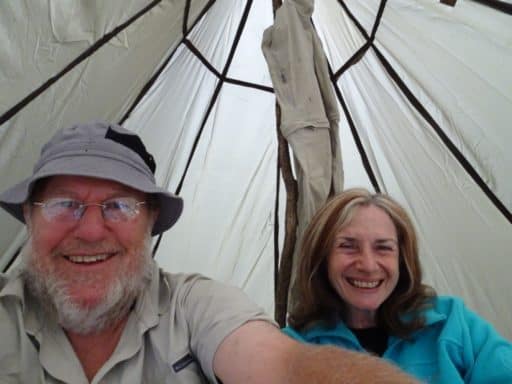
I have found that a light down coat and vest is all one needs to supplement a -1C sleeping bag down to temperatures of -10 to -15C. I would wear the vest on my lower body. The down socks and insulated hat are an added luxury.
My day clothes are a pair of Columbia Silver Ridge trousers (or the like). I have found them very serviceable for many years now, though I have ripped some. I carry a needle and thread for such repairs or for sewing up the occasional wound.
In the winter I would wear a wool shirt such as Kathmandu’s Komar or Icebreaker’s Departure 2 (long sleeves as above or short – for warmer weather) and probably carry a wool T-shirt or singlet if it is a little colder. Sometimes a light wool vest as an extra layer for particularly cold daytimes. Glowing Sky have excellent wool tees, singlets, vests etc.
In summer I have lighter wool shirts such as Kathmandu’s wool polo – or the excellent (and cheap) Merino Polo . You really need wool shirts and undies if you are not going to stink like the monster from the black lagoon. Nylon is terrible.
Wool underpants (Icebreaker) are excellent, though I have pretty much never needed long johns during the day. In NZ folks almost invariably wear shorts during the day no matter what the weather. Wet longs or waterproofs trousers do impede your progress and consume much more energy walking.
I find the light Columbias are a reasonable compromise, protecting the lower legs from lots of scratches you would definitely get in the Australian bush anyway.
I usually only wear light socks such as Holeproof’s ‘Heroes’ as sneakers are pretty warm – anyway I don’t suffer from cold feet. (These are now made by Bonds and have been renamed). In the colder winter I might use their Explorers. These last for many years.
I usually carry a dry/spare pair of socks for when the down socks are too warm, or for when you wear a hole in your main pair of socks. As you have probably noticed I have a sub one ounce homemade pair of dyneema moccasins which weigh 12 grams each for dry camp shoes. Make a pair yourself from my instructions.
I carry two handkerchiefs cut down from a microfiber towel as I suffer from sinusitis especially in the morning. I also carry a microfiber towel cut in half lengthwise (so I can dry my back). The half towel doesn’t get you quite as dry as a whole one would, but the time difference is probably less than a minute after you put your clothes back on, so I don’t see the point of hauling the extra 40 grams or so.
My wife takes a whole towel. Sissy! I admit if you are drying yourself at less than freezing such as on the Everest Base Camp trip the larger towel would have been an acceptable luxury.
I have a pair of Mountain Laurel Designs Event mitts and a thin pair of wool Icebreaker liner gloves for when it is very cold and wet. Though most of my camping out is in the winter (and in the mountains) I doubt I ever put them on more than once a year. I guess I don’t suffer from cold extremities in general. My wife Della uses hers much more than I do.
Of course I carry a light raincoat. I would wear a heavier one out too! I now own a pair of light breathable waterproof trousers, but I would only take them if I was going to Fiordland or somewhere which is going to be very wet and cold. Again, my wife suffers from the cold more than I do and wears hers much more.
They do keep your legs and trous much warmer and drier in inclement weather (on tracks). Usually too warm for me. For somewhere it is going to rain a lot (like Fiordland or Southern Tasmania) we now have an ultralight umbrella each – for use on tracks only. Mine is 85 grams. Such a roof can be a lifesaver. If you haven’t got one you can do this.
I also have a pair of Mountain Laurel Designs ultralight gaiters. These are great for keeping mud and trash out of your boots especially when wading through swamps and the like (common in Fiordland). Most places I leave them at home. I tuck my trousers into my socks to discourage leeches.
In very wet places like this I would usually take a hammock and light tarp (the two together weighing less than 350 grams). You can hang two hammocks under one tarp, but when stopping for lunch or a break the two of us can sit side by side and even boil the billy for a hot cuppa.
In Fiordland especially it is frequently too wet or the ground too uneven (or both) to put up a tent where you may need to stop. Because the area is heavily forested it is never very difficult to find a couple of suitable trees however.
Two up under a tarp in Fiordland.
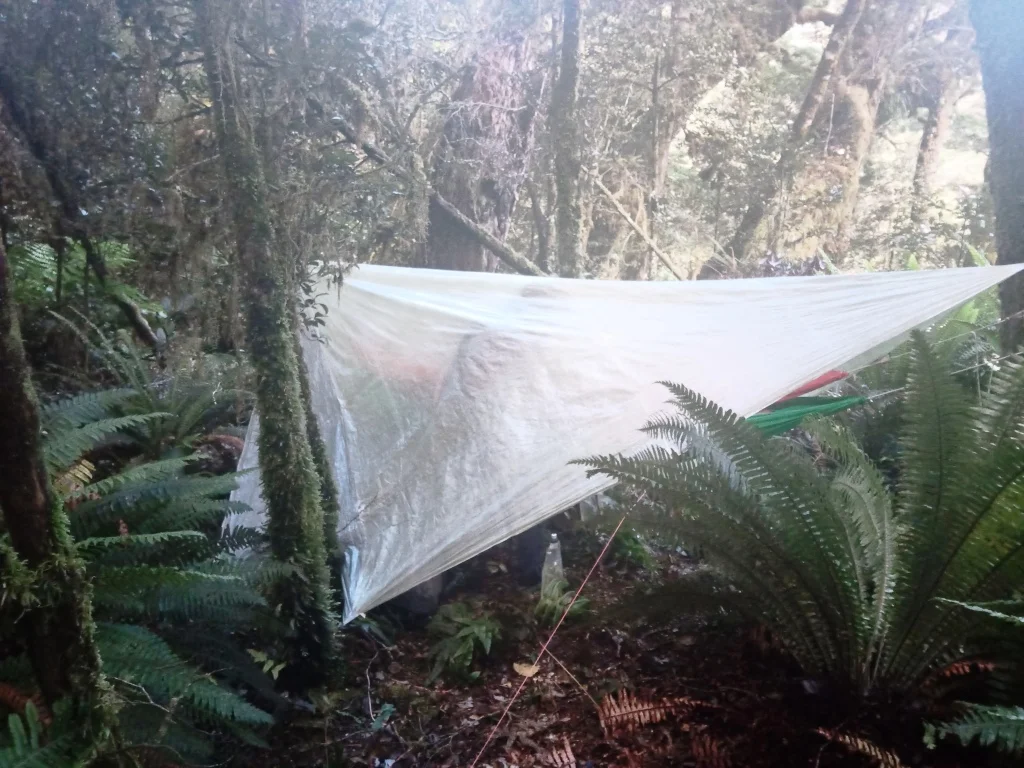
My -1C sleeping bag (compressed to 2 litres) and all my (spare) clothes (compressed) take up less than 6 litres in my pack. See: http://www.theultralighthiker.com/a-tardis-folding-space/ My tarp and hammock take up less than a litre. I know these are not clothes, but remember what I said right at the start about folks carrying too much other stuff but not enough survival equipment.
You should never count on getting to shelter. The very next step you take you might turn your ankle (the river may flood or a walk-wire might be out) for example, then where will you spend the night?
First Published Aug 16, 2018
About washing clothes: Ultralight Mobile Clothes Line
For some other thoughts about what I often carry in the bush try this post: A Gorilla in the Bush or this: EBC Gear List
See Also:
https://www.theultralighthiker.com/2020/03/15/backpack-tips-and-tricks/
http://www.theultralighthiker.com/carry-a-knife/
http://www.theultralighthiker.com/the-importance-of-a-roof/
http://www.theultralighthiker.com/the-poor-mans-satellite-phone/
http://www.theultralighthiker.com/from-dawn-to-dusky-day-2/
http://www.theultralighthiker.com/the-lure-of-the-moose/
http://www.theultralighthiker.com/a-blast-of-a-pack/
http://www.theultralighthiker.com/best-hunting-daypack/
http://www.theultralighthiker.com/an-open-shelter/
http://www.theultralighthiker.com/the-deer-hunters-tent/
http://www.theultralighthiker.com/montbell/
http://www.theultralighthiker.com/hiking-pants/
http://www.theultralighthiker.com/are-you-beautiful-in-the-buff/
http://www.theultralighthiker.com/ultralight-rain-jackets/
http://www.theultralighthiker.com/ultralight-rain-gear/
http://www.theultralighthiker.com/tasmanias-south-coast-track-hells-holiday/
http://www.theultralighthiker.com/19-gram-dyneema-camp-shoes/
http://www.theultralighthiker.com/i-followed-my-footsteps/
http://www.theultralighthiker.com/ultralight-mitts-and-gaiters/
http://www.theultralighthiker.com/hammock-hunting-till-dark/
http://www.theultralighthiker.com/simple-hammock-double-up/
http://www.theultralighthiker.com/a-tardis-folding-space/
http://www.theultralighthiker.com/how-warm-a-bag-or-quilt-do-i-need/
http://www.theultralighthiker.com/the-ultralight-deer-hunter/

